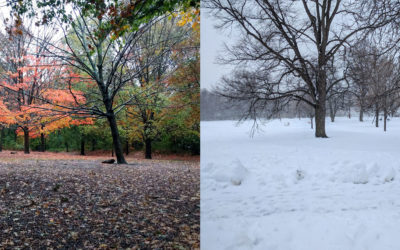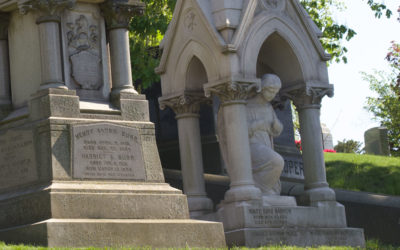Reading Literature: Improvisations and Explorations
Reading Literature: Improvisations and Explorations
By Robert DiYanni, New York University
In memory of all my splendid teachers of literature, who inspired me to follow in their wake.
TABLE OF CONTENTS
PART ONE: Reading Poetry—6 Ways In
Prelude: The Pleasures of Poetry
- Looking & Listening—Billy Collins: Introduction to Poetry; Gwendolyn Brooks,:We Real Cool; Lucille Clifton: homage to my hips
- Speaker, Structure, Sound—W. B. Yeats: An Irish Airman Foresees His Death
- Argument—Andrew Marvell: To His Coy Mistress
- Tone—Elizabeth Bishop: One Art
- Poetry & Arts—W. H. Auden: Musée des Beaux Arts; William Carlos Williams: Landscape with the Fall of Icarus; Pieter Breughel the Elder: Landscape with the Fall of Icarus; Walt Whitman: from Song of Myself
- Interrupted Reading—Robert Frost: Stopping by Woods on a Snowy Evening
PART TWO: Reading Fiction—6 Ways In
Prelude: The Pleasures of Fiction
- Questions—Katherine Anne Porter: Rope
- Surprises—Petronius: The Widow of Ephesus
- Voices—Jamaica Kincaid: Girl
- Cultural Values—Sandra Cisneros: There Was a Man, There Was a Woman / Barbie-Q
- Fiction & Arts—Ernest Hemingway: from The Revolutionist / from A Farewell to Arms
- Interrupted Reading—Kate Chopin: The Story of an Hour
PART THREE: Reading Drama—6 Ways In
Prelude: The Pleasures of Drama
- Mental Theater—Terrence McNally: Andre’s Mother
- Subtext—Wendy Wasserstein: from Tender Offer
- Language & Style—William Shakespeare: from Othello
- Scene and Sound—William Shakespeare: from Macbeth
- Soliloquy—William Shakespeare: from Henry IV, Part I
- Interrupted Reading—George Bernard Shaw: from Arms and the Man
PART FOUR: Reading the Essay—6 Ways In
Prelude: The Pleasures of the Essay
- Beginning & Ending—Brian Doyle: Joyas Voladoras
- Annotation—Francis Bacon: Of Youth and Age
- Style and Tone—Mary Wollstonecraft: from A Vindication of the Rights of Woman
- Slow Reading—Leslie Jamison: A Street Full of Splendid Strangers
- Reading Framework—Jamaica Kincaid: from On Seeing England for the First Time
- Interrupted Reading—George Orwell: A Hanging
PART FIVE: Reading with Literary Elements—6 Takes
Prelude: The Value of Literary Elements
- Elements of Poetry—G. M. Hopkins: Spring and Fall: To a Young Child
- Elements of Fiction—Alice Walker: Everyday Use
- Elements of Drama—Lady Gregory, Isabella Persse: The Rising of the Moon
- Elements of the Essay—Annie Dillard: Living Like Weasels
- Elements of Epic—Homer: Iliad and Odyssey
- Elements of Speeches: Elizabeth I, Speech at Tilbury/Sojourner Truth: Ain’t I a Woman
PART SIX: Reading Literature Through Critical Perspectives—6 Double Takes
Prelude: The Value of Critical Perspectives
- Formalist and Reader-Response Perspectives
- Biographical and Historical Perspectives
- Psychological and Sociological Perspectives
- Mythological and Structuralist Perspectives
- Deconstructionist and Post-Colonial Perspectives
- Eco-Critical and Influence & Values Perspectives
Prelude: Understanding Literary Conventions
Preface
I begin with a series of questions.
- How might you read literature more rewardingly?
- Why do you read literature? What is your main purpose?
- What do you want to take from your experience of reading literature?
Answers to these questions provide a starting point for thinking about how you read literature and why you read it the way you do. The literary works you read might matter as much for how you read them as for which works you read and why.
I believe that most people read literature for the pleasure it brings them, for how it deepens their understanding and becomes relevant to their lives. I assume that, to some extent at least, this is the case for you. My goal, thus, in this book, is to help you better enjoy, appreciate, and comprehend literary works and relate them to your life. To that end, I offer a set of “ways in” to reading literary works inspired by the improvisation of jazz musicians.
My improvisatory approach is less a direct imitation of jazz musicians’ improvising than inspiration I take from how they make music. My approach is suggestive rather than prescriptive. It’s less a system than a method, less a template or formula than a series of strategies for engaging with literary works productively and pleasurably. These “ways in” are not exhaustive, of course; other approaches exist, alternative strategies to read literature beneficially. But the strategies I provide here have worked for me and for other readers, young and old, as well. These approaches to reading literature result, consistently, for readers in beneficial literary encounters and rewarding literary experiences. And they can work for you.
Reading Literature ranges across the major literary genres—poetry, fiction, drama, and essay. Each genre comprises one of the book’s parts. I include two additional parts on literary elements and on basic literary theory. For each genre, I identify 6 “ways in” to literary works. One, the interrupted reading, concludes each genre section. In part five, I use the literary elements as the basis for sample analyses of lyric poem, short story, play, essay, epic, and speech. Part six offers an introductory overview of a dozen paired critical approaches, or theoretical perspectives, as ways in to reading literature rewardingly.
I base my approach to reading literature on the following axioms:
- We read literary works as acts of imagination—imaginative creations made of words.
- We read works of literature as symbolic actions, and not as literal statements.
- The characters we encounter in literary works are neither simply words on a page nor real people, but rather “possible” people, whose feelings and thoughts we can share virtually, whose inner lives we can understand.
- We read literary works as distinctive and singular, but also as part of larger literary and cultural contexts. Although we experience literary works as unique creations, we read them, simultaneously, as part of an ongoing tradition.
- Our reading of literature, though it begins in private and touches our singular intellectual and emotional being, is also social, even civic and ethical.
- Our reading of literature is dialogic: we read in dialogue with authors of literary works. And we also read in conversation with ourselves and with other readers.
- Literature enables us to develop our judgment through observation and reflection. It provides occasions for us to achieve a degree of discernment, and with experience, even wisdom.
I hope you find my varied “ways in,” or “takes,” on reading literary works and the application of the literary elements and theories of value. Your investment in refreshing your reading practices will enhance your understanding, deepen your appreciation, and increase your enjoyment of literature. I believe that Reading Literature; Explorations & Improvisations can help you experience the deeper pleasures and richer rewards reading literature provides.
Current Writing Projects
My current writing projects are linked below: (1) a book on reading literature (Improvisations); (2) two books on getting smarter (fast and across the board); (3) a pair of memoirs about my teaching life (50 years+) and my life with music (even more years!). Also included is information about my biggest work-in-progress: an encyclopedic summa pedagogica, with the current title: Provocative Pairs—Learning with the World’s Masters (152 chapters—and counting—each chapter a dozen double-spaced pages, with most chapters devoted to a pair of great masters past and present).
For each of these works in the making, I have provided a table of contents and preface. A couple of them also include a sample chapter. An additional book I have in the works is Poems to Live By, for which I’ve included about a third of what I’ve written so far—also with a brief TOC and prefatory note.
Mastery—Learning with the World’s Best Masters
SMARTER—How Getting Smarter Can Enrich Your Life
Think for Your Life
How Critical and Creative Thinking Can Improve Your Life
Teach for Your Life
Stories of Teaching & Learning
Double Life: The Teaching Life & Living with Music
Poems to Live By
Essays: Reflections and Ruminations

Robert DiYanni
Author ⪢ | Professor ⪢ | Consultant ⪢
Robert DiYanni is a professor of humanities at New York University, having served as an instructional consultant at the NYU Center for the Advancement of Teaching and Center for Faculty Advancement. For these centers he conducted workshops and seminars on all aspects of pedagogy, consulted with faculty about teaching concerns, visited and observed classes, and provided a wide range of pedagogical consultative services. Professor DiYanni serves on the faculties of the School of Professional Studies and the Stern School of Business at NYU. He earned his undergraduate degree in English from Rutgers University, attended a Master of Arts in Teaching program at Johns Hopkins University, and received a Ph.D. in English Language and Literature from the City University of New York Graduate Center.
In addition to his work at NYU, Dr. DiYanni has taught at City University of New York, at Pace University, and as a Visiting Professor at Tsing Hua University in Taiwan and at Harvard University. As a high school teacher for four years and a college professor for more than four decades, Professor DiYanni has taught students from eighth grade through doctoral candidates. Most of his teaching, however, has been with college and university undergraduates. His numerous workshops, offered in more than twenty countries, have been attended by secondary school teachers and administrators, as well as by undergraduate college and university faculty and administrators.
Dr. DiYanni has written and edited numerous textbooks, among them, Literature: An Introduction; The Scribner Handbook for Writers (with Pat C. Hoy II); Arts and Culture: An Introduction to the Humanities, (with Janetta Rebold Benton), the basis for a series of lectures given at the Metropolitan Museum of Art; and Modern American Poets: Their Voices and Visions, which served as a companion text for the PBS television series Voices and Vision, which aired in the late 1980s.
You may also want to read these…
Comparing Poems
Comparison is one of the best ways of teaching anything; it is especially useful for reading and teaching…
The Widow of Ephesus
Once there was a certain married woman in the city of Ephesus, whose faithfulness to her husband…
Villanelle Variations
“I learn by going where I have to go,” writes Theodore Roethke in “The Waking.” “The art of losing…


